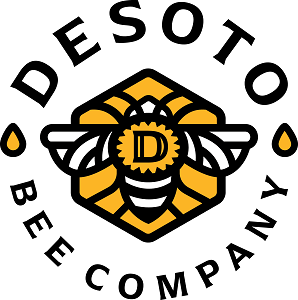JONESVILLE HONEY
MAKING HONEY
- Honey bees collect nectar from flowers as their raw material for making honey. They use their long proboscis to extract the sweet liquid from the flower’s nectarines or glands.
- Once the bee collects nectar, it stores it in its honey stomach, a separate compartment specially designed for carrying nectar back to the hive. This is different from its regular stomach used for digestion.
- Enzymes present in the bee’s honey stomach start breaking down complex sugars in the nectar into simpler sugars, such as glucose and fructose.
- Back at the hive, the bee regurgitates the partially processed nectar into the mouth of another bee. This process, known as trophallaxis, allows the enzymes to further break down the sugars and introduces helpful bacteria and yeasts from the other bee’s mouth.
- The bees pass the nectar from bee to bee, adding more enzymes and continuing the breakdown process until it becomes partially digested honey.
- Once the partially digested nectar is transferred into the honeycomb cells, the bees fan their wings to evaporate excess moisture, reducing the water content of the nectar to around 17-20%. This lower moisture content is crucial for preventing fermentation and preserving the honey.
- The bees seal the honeycomb cells with beeswax to protect the honey from moisture, air, and contaminants.
- The unique mix of enzymes, bacteria, and yeasts present in the partially digested nectar transforms the nectar’s sugars into various organic acids, contributing to the distinct flavor and aroma of honey.
- Beeswax, produced by the bees, provides a natural storage container for the honey. The wax cells also provide support and structure to the honeycomb.
- A single honey bee will produce only about 1/12th of a teaspoon of honey in its lifetime. It takes the combined effort of many bees in a colony to produce substantial amounts of honey.
The process of making honey is a remarkable feat of cooperation and chemical transformation carried out by honey bees. From collecting nectar to the precise timing of evaporation and sealing, every step contributes to the creation of the delicious and beloved substance known as honey
WHY HONEY IS GREAT FOR US
- Honey is a natural sweetener that has been used by humans for thousands of years. It is not only a delicious alternative to sugar but also adds unique flavors and aromas to various culinary creations.
- Honey has been used for its medicinal properties throughout history. It has antimicrobial and antibacterial properties, making it a popular ingredient in traditional remedies for soothing sore throats and coughs.
- Honey is known for its ability to help heal wounds and burns. Its natural antibacterial properties and low water content create an environment that promotes healing and prevents infection.
- Honey is a natural humectant, meaning it attracts and retains moisture. This property makes it a valuable ingredient in skincare products, helping to moisturize and nourish the skin.
- Due to its antimicrobial properties, honey can have a long shelf life. Archaeologists have found jars of honey in ancient Egyptian tombs that are still edible after thousands of years!
- Honey is a versatile ingredient that can be used in a wide range of recipes, including baked goods, marinades, dressings, and beverages. Its unique flavors and sweetness can enhance both sweet and savory dishes.
- Honey comes in various colors and flavors, depending on the types of flowers the bees gather nectar from. Different floral sources, such as clover, orange blossom, or lavender, result in distinct honey varieties with their own characteristic tastes and aromas.
- Honey is composed primarily of sugars, such as glucose and fructose, but it also contains trace amounts of minerals, vitamins, and antioxidants. However, these nutrients may vary depending on the specific floral source of the honey.
- Honey can crystallize over time, forming granules or crystals. This is a natural process and does not indicate spoilage. To restore crystallized honey to its liquid state, gently warm it by placing the container in warm water.
- Honey can be used as a natural sweetener and flavor enhancer in various beverages, such as teas, smoothies, and cocktails. It adds a delightful touch of sweetness and complexity to drinks.
From sweetening recipes to soothing sore throats, honey offers a multitude of uses and benefits. Its natural properties make it a valuable ingredient in both culinary and medicinal applications, making it a cherished and versatile pantry staple for people around the world.
